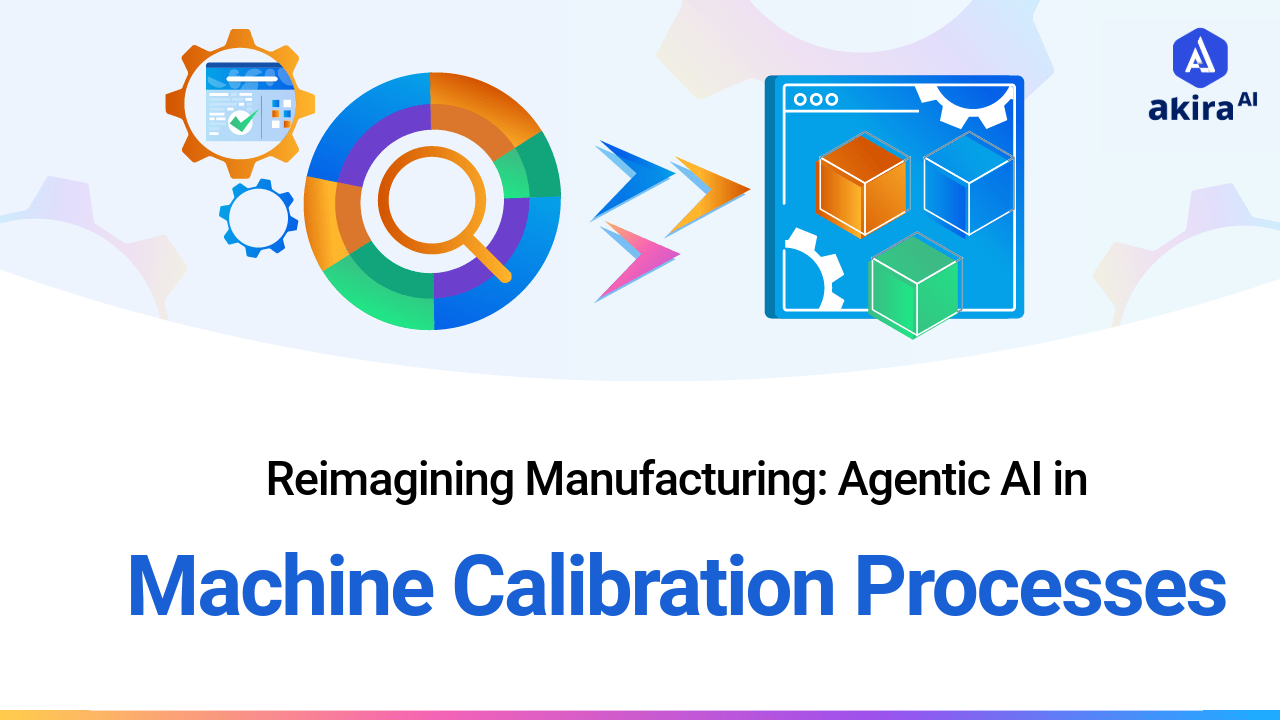According to the market insights, the output in the manufacturing market is projected to amount to a staggering US$35.1 trillion in 2024. As this sector continues to evolve, the efficiency of operations, particularly in managing raw materials, becomes crucial for sustaining profitability and competitiveness. Raw materials inventory management assumes a central position in this respect since it allows organizations to strike the right balance of inventory levels and costs in a way that fosters smooth production processes.
Incorporating AI agents into this system improves decision-making and offers live data, changing how manufacturers work. This blog delves into the critical components of raw materials management and explores how these agents are revolutionizing this essential function.
What is Raw Materials Inventory Management?
Raw Materials Inventory Management involves the systematic oversight of materials used in the manufacturing process, from procurement to usage. It ensures that the correct quantities of materials are delivered at the right time and, in the process, eliminates unduly high stocks and lack of materials, hence hindering production. Management activities involve checking the stock amount in the stores, identifying the material flow, and checking the requirements in light of the production plan.
However, the manufacturing process is more challenging due to several uncontrolled factors, such as demand variability, supply chain disruptions, and changing market forces. Optimum control of raw materials also cuts costs for storage and disposal and results in better efficiency and a better final product.
Brief Overview of AI Agents for Raw Materials Inventory Management
AI agents in raw materials inventory management build on existing non-intelligent approaches by adding a layer of automation. Such agents can pull large databases, learn from past patterns, and accurately predict future material necessities. They are perfect for dynamic manufacturing environments because they can adjust to changing conditions, unlike traditional inventory systems, which depend on manual data entry and predefined rules.
Automating everyday tasks like monitoring stock levels and sending reorder notifications allows human resources to focus on more strategic decision-making. These agents make processes less likely to have hitches, which helps improve the management process from reactive to proactive levels.
Traditional vs. Agentic AI Raw Materials Inventory Management
|
Feature
|
Traditional RPA
|
Agentic AI-Based RPA
|
|
Intelligence
|
Rule-based automation
|
Learns and adapts over time
|
|
Task Complexity
|
Simple, repetitive tasks
|
Complex processes requiring decision-making
|
|
Integration
|
Limited to existing workflows
|
Seamless integration with AI capabilities
|
|
Scalability
|
Hard to scale for complex tasks
|
Easily scalable with multiagent systems
|
|
Response to Exceptions
|
Requires human intervention
|
Handles exceptions autonomously
|
|
Operational Efficiency
|
Moderate efficiency gains
|
Significant efficiency improvements
|
How Do AI Agents Facilitate Raw Materials Inventory Management?
AI agents facilitate raw materials management in several impactful ways:
-
Streamlining Workflow Automation: These agents are best suited to workflows that consist of a series of linked steps and decision areas. This capability enables manufacturing companies to optimize their processes in order to reduce cycle times while also directing more human capital to other projects. By automating routine operations, manufacturers can focus on strategic planning and innovation.
-
Instantaneous Data Processing: With the ability to process vast amounts of data in real-time, these agents empower manufacturers to make rapid, informed decisions. They quickly identify inefficiencies, trends, and opportunities for improvement, enabling businesses to adapt swiftly to changing market demands or supply chain disruptions. This agility is vital for maintaining competitive advantage.
-
Collaborative Multi-agent Systems: Autonomous agents function collaboratively within multi-agent systems to optimize inventory workflows. This teamwork allows for the distribution of tasks among specialized agents, each dedicated to specific components of inventory management. They act in a coordinated way in order to solve complicated problems better than single systems, thus improving general performance.
-
Insight Generation and Analytics: The integration of multi-agent systems provides manufacturers with powerful insights into their inventory dynamics. The agents in this system analyze performance metrics to highlight bottlenecks and areas ripe for optimization. Such enhanced analysis facilitates constant improvement in the inventory management practices of various organizations, hence promoting dynamism.
-
Flexible Adaptability: These agents are engineered to adapt seamlessly to new data and evolving market conditions. This flexibility means that the processes of inventory management maintain congruity with business goals and promote the organization's ability to adapt to changes in demand or the supply chain. They are able to keep inventory levels on target as the very nature of the market evolves.
How does Akira AI optimize raw materials inventory management?
Akira AI leverages a suite of specialized agents to enhance manufacturing inventory management of raw materials, ensuring efficiency and effectiveness across the supply chain. Here’s how each agent contributes to optimizing inventory processes:
-
Cost Analysis Agent
The cost analysis agent plays a pivotal role by analyzing spending patterns related to raw materials and inventory management. It identifies areas for cost savings, enabling organizations to optimize budgets and allocate resources more effectively. By providing detailed insights into financial performance, this agent helps manufacturers reduce unnecessary expenses while maintaining inventory levels.
-
Supplier Performance Agent
This agent is always in contact with the vendors to constantly check on metrics such as the number of days to delivery and the quality of the materials acquired. In assessing supplier reliability, the results help an organization to make good decisions as to which suppliers they should engage with. This proactive management is not only good for supply chain performance but also reduces the probability of interruption in the supply chain.
-
Compliance Monitoring Agent
In the manufacturing sector, adherence to regulatory requirements is crucial. The compliance monitoring agent automates the tracking of these standards, ensuring that all processes align with industry regulations. This reduces the risk of non-compliance penalties and enhances stakeholder confidence, thereby strengthening the organization’s reputation in the market.
-
Collaboration Agent
Acting as an intermediary between automated systems and human operators, the collaboration agent enhances communication and streamlines interactions. It optimizes the movement of data by removing the constraints that would have acted as hiccups in the inventory processes and making it hard for the teams to attend to new opportunities and risks.
-
Feedback Analysis Agent
This agent gets information from the users regarding their encounters with the inventory management system. Feedback is an important tool that allows the organization to make progressive improvements to its processes. In this regard, user input is always considered in order to adapt the inventory management system to the changing requirements of the manufacturing setting and result in higher user satisfaction.
-
Real-Time Data Processing Agent
This agent enables real-time analysis of inventory data, providing immediate insights into stock levels, demand fluctuations, and supply chain metrics. Equipping manufacturers with timely information allows for quick decision-making and agile responses to market changes, ensuring optimal inventory levels and reducing the risk of stockouts or overstocking.
Operational Benefits in Raw Materials Inventory Management
AI agents in raw materials inventory management yield several key benefits:
-
Enhanced Quality Control: Reducing human intervention by smart decision-making leads to better and more efficient outputs in an organization. Considering this aspect, mistakes made in the procurement process are less likely to happen, and that directly results in the efficiency of the utilization of resources.
-
Flexible Scalability Options: These agents are designed to adapt to changing business needs seamlessly. This flexibility makes it easier for organizations to scale their inventory management efforts efficiently, accommodating growth without disrupting operations.
-
Substantial Cost Savings: Autonomous agents effectively lower labor costs associated with repetitive tasks. This results in significant operating cost reductions based on which resources can be well managed by firms.
-
Proactive Compliance Assurance: AI agents are responsible for monitoring and following all the legal standards in the organization. This measure reduces legal risks likely to be faced by organizations that fail to meet the set compliance level.
-
Elevated Customer Satisfaction: With improved inventory management, manufacturers can guarantee timely product availability. This reliability increases customer satisfaction, and this plays a part in customer loyalty, which is very important, hence the continued success of the business.





